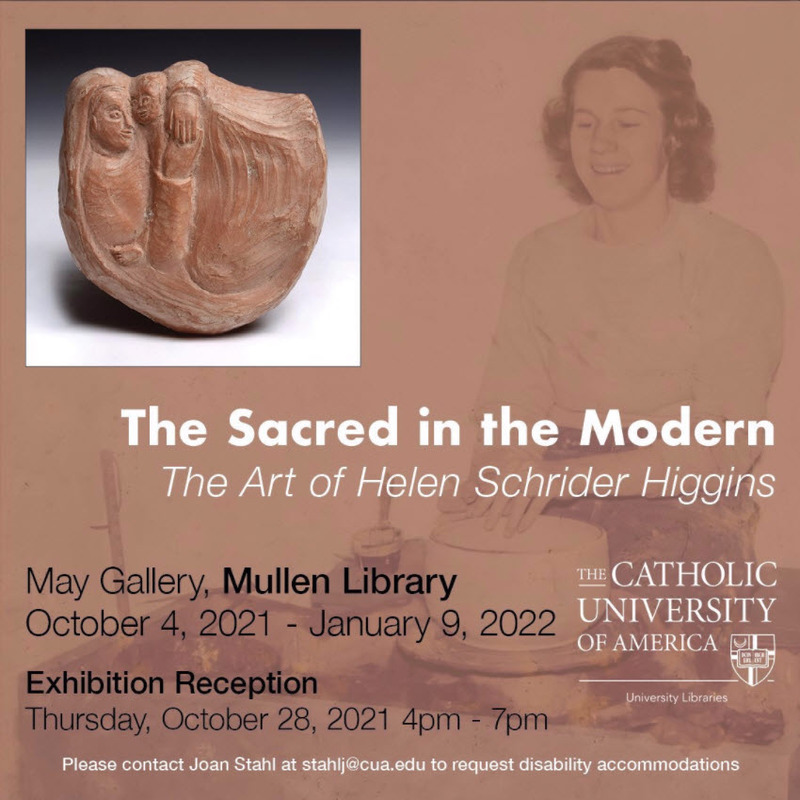The art of Helen Schrider Higgins is infused with a sense of the sacred. Her primary themes — the New Testament and the lives of the saints and nature — share a reverence for the miraculous.
Born and raised in Washington D.C., Helen received her B.A. in 1952 and M.F.A. in 1955 at The Catholic University of America (CU). During her time at CU, she was an active member of the Third Order of Saint Francis, a religious order of lay men and women who try to emulate St. Francis' spirit by performing works of teaching, charity, and social service.
At this time, she was coming into her own as an artist under the mentorship of Alexander Giampietro, a sculptor and ceramic artist who received his MFA from Alfred University in 1946 and attended the short-lived, yet influential, New Bauhaus of Chicago. Another key art professor, Kenneth Noland, the celebrated Washington Color School painter, attended legendary Black Mountain College in Asheville, North Carolina, before moving to Washington D.C. and teaching at CU.
This exhibit spotlights the life and career of a woman artist, who was simultaneously a trailblazer and a traditionalist. She started at CU not long after women were allowed to enroll. She was the only woman enrolled in Noland's graduate level design course. Her MFA thesis, a site-specific permanent installation on the exterior of the Salve Reginia Hall illustrating the life of St. Francis of Assisi, shows this duality of modernity and tradition. While studying contemporary art at CU, she researched Byzantine art at Dumbarton Oaks Research Library in Georgetown. After graduating from CU, at a time when few women combined career with marriage and family, she never stopped creating art and exhibiting while she raised her nine children.
Her deep faith and art practice raises the questions: Can the creation of art become a form of prayer? What happens when an artist of faith’s aesthetic matures during a time when the principles of modernism in visual art — in particular, the famed Bauhaus school — become a key component of her art education and their experience of the emerging DC arts community? How did her lifelong creative friendships with sculptor Alexander Giampietro and Washington Color School painter Howard Mehring sustain her artistic development and connection to the principles’ of modernism?
Helen Schrider Higgins’ body of work includes sculptural ceramics, functional ceramics, color-infused drawings, prints, and paintings. Sacred themes that honored her Catholic faith were intertwined with her connection to the natural world and a reverence for all life.
This online exhibit showcases her trailblazing art and career.
